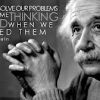 591
591U can do it this way..
(1+i)n = C0 + C1i + C2i2 + C3i3 + ......
&(1-i)n= C0 - C1i + C2i2 - C3i3 + ......
when u add them all the terms with odd powers of i cancel off..and even powers of i are real..so
(1+i)n + (1-i)n is real for any n>0
 481
481Is answer B?
I would prefer doing this by putting the options
(1+i)^n1 + (1-i)^n1 + (1+i)^n2 + (1-i)^n2
Taking B option as my answer and putting n2=2 and n1=1(n1,n2 are real)
we get
2 + (1+i)^2 + (1-i)^2= 2(which is real)
So,B
 481
481Sry n1,n2 are positive integers.....make correction in my answer....
 535
535(C)(1+i)n1+(1+i3)n1+(1+i5)n2+(1+i7)n2
= (1+i)n1+(1-i)n1+(1+i)n2+(1-i)n2
= (1+i)n1+2n1(1+i)n1+(1+i)n2+2n2(1+i)n2
=2n1.in1+2n1(1+i)n1+2n2.in2+2n2(1+i)n2
=2n1(in1+1)(1+i)n1+2n2(in2+1)(1+i)n2
Both the terms are symmetric wrt to each other. Therefore, n1=n2.
Also,
in the given expr.[(1+i)n1+(i+13)n1+(i+15)n2+(i+17)n2] just put n1=n2=1.
 466
466In the 2nd , 3rd and 4th brackets it wud be 1+i instead of i+1 ,i.e., the powers 3,5,7 wud b on i ...
 Himanshu Giria thanks...Upvote·0· Reply ·2014-02-06 21:37:42
Himanshu Giria thanks...Upvote·0· Reply ·2014-02-06 21:37:42